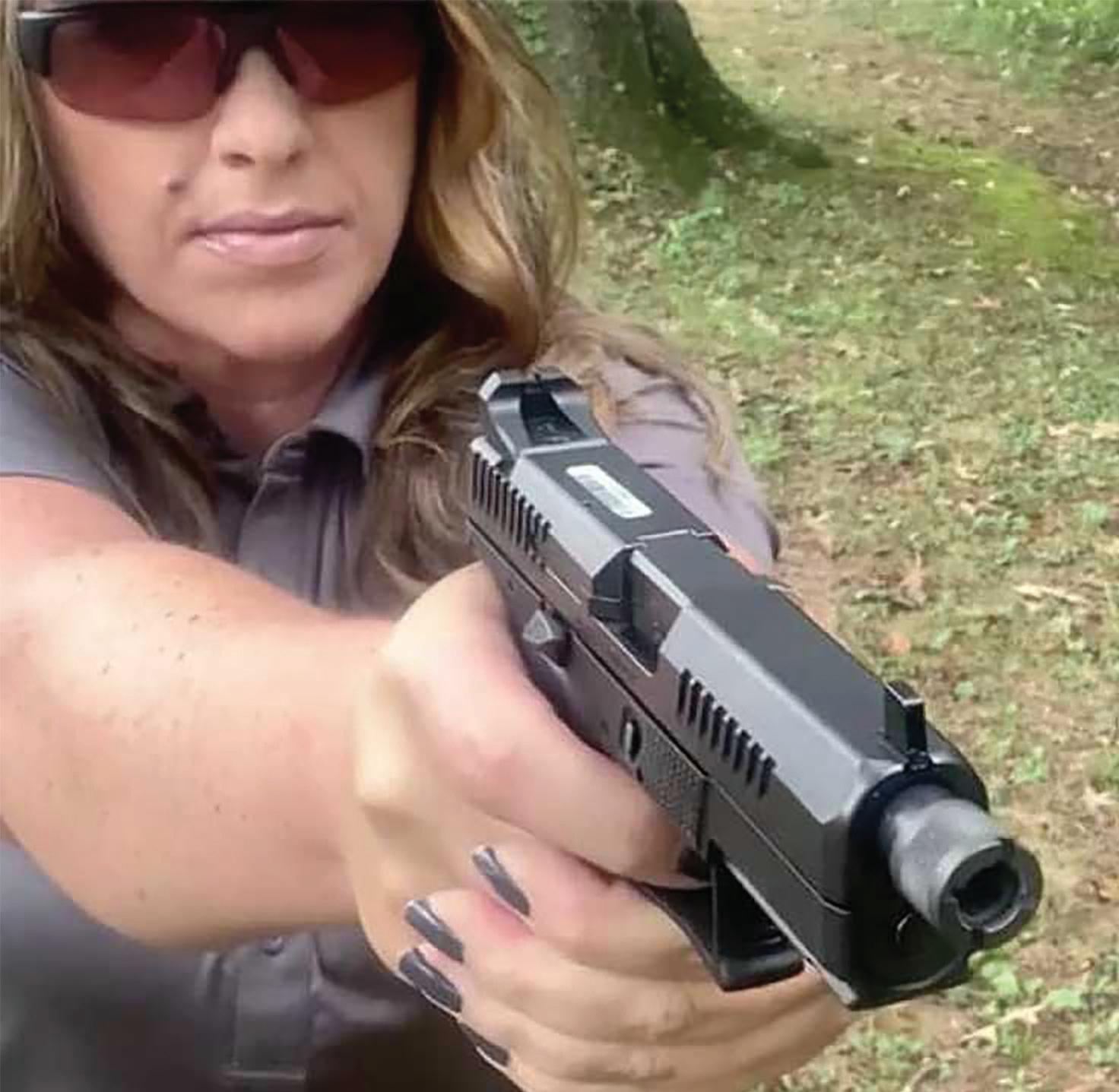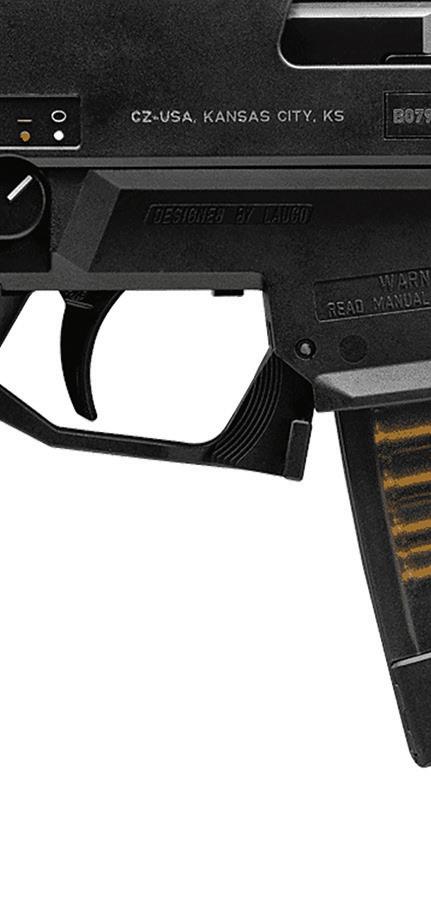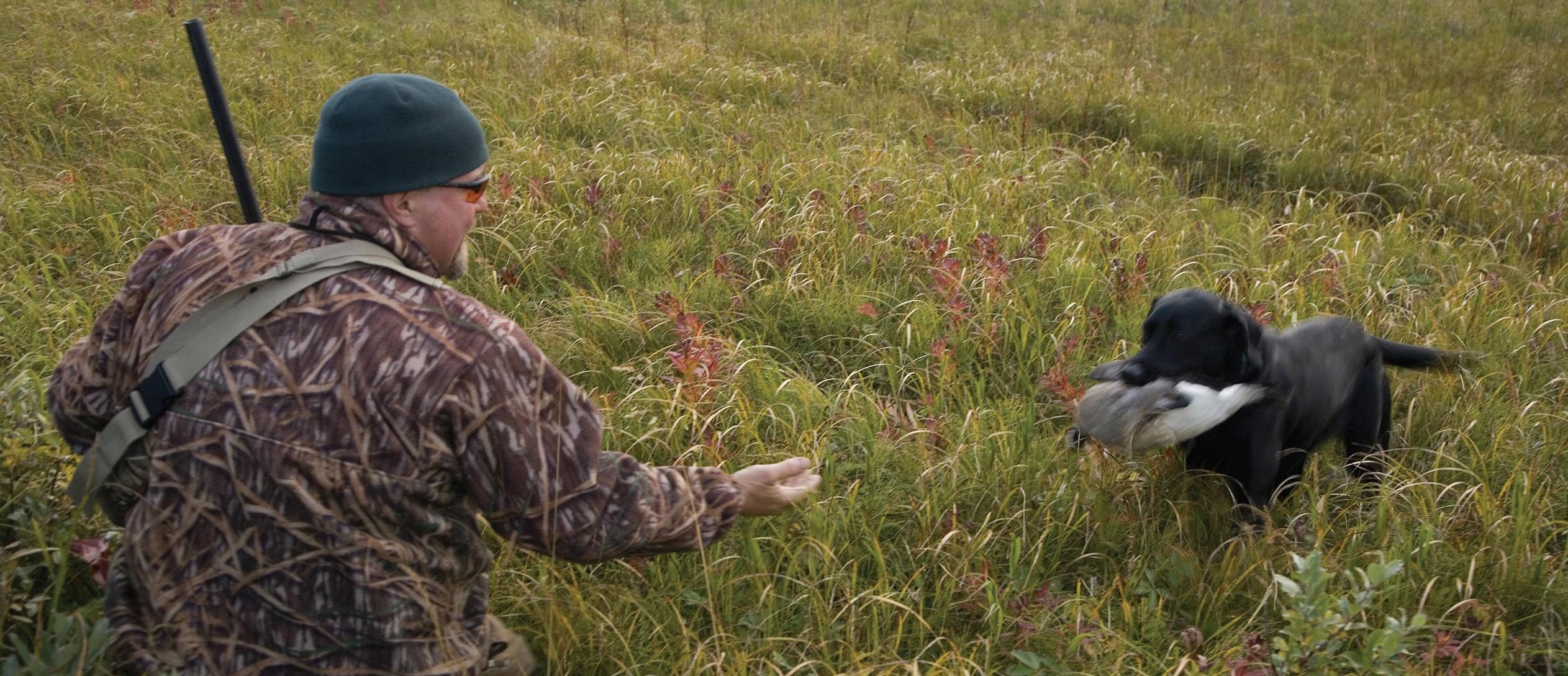
18 minute read
Texas Boating
by LENNY RUDOW :: TF&GBoating Editor

Ten Items Every Boat Should Have on Board
WHETHER WE USE OUR boat for shing, hunting, or sometimes just enjoying the sights of nature out on the water, one thing is for sure: we carry lots of gear — lots and lots of gear.
Some of it is more important than the other stu . Sure, we know having the gear necessary for safety and communications, such as life jackets and rst aid kits or VHF radios and satellite messengers, is critical.
Yet there’s a long list of stu that falls into the category of “other” that should also be aboard every boat. Some of the gear that makes the list may surprise you. e next time you shove o the dock, be sure to have these 10 items aboard:
1. A LONG LENGTH OF EXTRA ROPE. With today’s super-strong paracord, you can pack away a coil of 50-plus feet in a sandwich baggie. It can come in handy for all sorts of things: lashing together broken parts and pieces, securing items in rough seas, or even tying o the boat to a tree or dock if need be.
2. DUCT TAPE. No, we don’t recommend making “permanent” repairs with this stu , but it’s the bomb for making on-the-spot quick xes and patches that will get you home. From ripped canvas, to broken plastic, to cracked hoses, it’ll do the temporary trick.
3. A BOTTLE OF WATER AND A PROTEIN BAR. If you only bring what you plan to drink and eat that day, a time will probably come when a breakdown or weather leaves you stranded, hungry, and thirsty. Excluding your provisions for the day, you should always have some extra water and food aboard your boat in case of emergency.
4. A MULTI-TOOL. It should be a strong one, not one of the cheap and easily broken versions, and this is on top of your emergency tool kit. e idea isn’t to depend on it if you need to make repairs, but rather, to have a backup to the tools you already haul along. Critical components include a knife blade, screwdrivers, and pliers.
5. A FLASHLIGHT (with fresh ba eries). You might not ever plan to be out on the water past dark, but accidents and mechanical breakdowns do happen. If you nd yourself under a moonless sky past sunset, you’ll want a light source not only so you can see, but also for signaling others. Stay on top of those ba eries, too, because it’s all too easy to pack away the ashlight and forget about it for months on end. As a rule, change the ba eries every spring and fall.
6. A TOWEL (packaged and stowed in such a way it stays dry). You’d be amazed at what a lifesaver a simple towel can be. Whether someone falls overboard or takes a face-full of spray on a chilly December morning, having a towel to dry o with can make the di erence between continuing on your trip or turning around and going home before someone gets hypothermia.
7. A SPARE PAIR OF POLARIZED SUNGLASSES. You may carry your sunglasses as close as you carry your wallet, which is a good thing. On a boat they aren’t just for comfort but also serve as bona de eye protection. On bright days when the sun’s re ecting o the water, photokeratitis is a serious danger. Although you might never leave the dock without your shades, it’s common for a guest to forget them or not realize just how important it is to wear them when on a boat. So, having a spare pair on hand is always a good idea.
8. SUNTAN LOTION. As with the water and food, we’re not talking about the stu you bring with you every trip. We’re talking about the spare tube you keep tucked away somewhere just in case. Sooner or later, for one reason or another, you’ll need it. When you do, you’ll be very glad you have it aboard to prevent turning into a lobster.
9. SOME SORT OF MANUAL BAILING OR PUMPING DEVICE. Bilge pumps can fail, and waves can roll over the bow. Whenever you’re on a boat there’s a possibility that water will get in. You should always have something that doesn’t depend on electrical power or complex machinery to get it back out. Be it a bucket, a capped jug with the bo om cut o , or a “ irsty Mate” style hand-powered piston pump, make sure there’s always something aboard you can use to manually bail water.
10. TOILET PAPER or some napkins. Because emergencies happen — enough said.
Remember, all this stu is on top of your standard-issue safety and communications gear. Also, this isn’t necessarily a comprehensive list. If you’re heading out for an extended voyage, an overnight trip, or far out into the ocean you’ll want to plan and pack accordingly. Remember, no ma er what sort of boat you have or where you do your boating, all 10 of these items belong aboard each and every time you shove o the dock.
Email Lenny Rudow at ContactUs@fi shgame.com

ERHAPS THE GREATEST ARGUMENT FOR THE RIGHT TO KEEP AND BEAR arms is protecting one’s life, family, and property from evildoers. Most of the time, that is framed within the context of a murderer or rapist breaking into a home or attacking in a dimly light parking lot. But what about self-defense in the woods? Increasing numbers of hunters and other outdoor lovers are encountering criminal elements and psychos. Add to that growing human-animal conflicts, not only with bears, mountain lions, and other carnivores but also with feral hogs, elk, and moose.
We will examine some basic strategies for staying alive and some great gun choices for defense beyond the pavement.

THINKING STRATEGICALLY The following is a list of things I have put into practice for years that have kept me safe. The list was inspired by close calls that inspired this article and reinforced to me why we should never enter the woods without a firearm.

Gunning up for self defense in the outdoors is wise, but proper training is a must.
STUDY THE AREA: e Internet is an excellent tool for studying areas. If you nd out an area is a high drug tra cker area, for example, avoid it like the plague. I have several places I no longer frequent because of this issue.
STAY CALM:
Stay calm if you encounter people in the woods who seem uneasy or a bit shi y. Ge ing angry or showing fear is an easy way to trigger someone who has violent tendencies. Staying calm is also essential for encounters with predators. If a bear catches you o -guard, for example, the last thing you want to do is run.
TRAVEL PLAN:
Leave your spouse or close friends a travel plan and let them know the points you plan to explore. For example, give them a time frame, and let them know who to call for help if you have not
returned by a particular time or day.
STRATEGIC PARKING:
Always park your vehicle facing out of the area as you check out. In a tight spot, you don’t want to have to back up and turn around during a retreat. Also, park in a clear area that you can see from a distance. If someone is waiting on you or has moved into the spot, it will give you a chance to assess the situation and prepare.
DON’T TRY TO BE A HERO:
If you see strangers poaching in the woods at night, for example, don’t be a hero and try to stop them. ey are armed and probably will use their weapons on you if you try to stop them. Call and report activity to local game wardens and get out as quickly as possible.
BUY AND CARRY A BEACON:
I carry a beacon that will alert all rescue personnel at the touch of a bu on. Don’t rely just on a cell phone. Get a beacon of some kind, too.
TALK TO LOCALS:
Not all information is on social media. Talking to locals in a gun shop or sporting goods store can give you good intel on the local region. For example, if you drew an elk tag for
el plan and let them know the points you plan to explore. For example, give them a time frame, and let them know who to call for help if you have not Talking to locals in a gun shop or sporting goods store can give you good intel on the local region. For example, if you drew an elk tag for







Scorpion EVO 3 S1 Pistol






THE MOST IMPRESSIVE STAT ON THE Scorpion Pistol is the price tag. Current production Scorpion pistols lack the 3/4-inch sling slot on the left side of the action that is present on earlier variants.
The CZ Scorpion EVO 3 S1 Pistol is legally classifi ed by the ATF as a pistol and is intended by CZ-USA to be used as a pistol.
Under current federal law and ATF policy, attaching a stock to this pistol—or attaching a device which is then used as a stock or intended to be used as a stock—
Under current federal law and ATF policy, attaching a stock to stock or intended to be used as a stock— constitutes the making of a constitutes the making of a short-barreled rifl e which short-barreled rifl e which requires registration requires registration with the ATF and the with the ATF and the payment of the payment of the applicable tax. applicable tax. Users of the Users of the CZ Scorpion EVO 3 CZ Scorpion EVO 3 S1 Pistol bear the sole S1 Pistol bear the sole responsibility for ensuring their use of this responsibility for ensuring their use of this fi rearm complies with all local, state, and fi rearm complies with all local, state, and federal fi rearms laws. federal fi rearms laws.


Wyoming, locals would know if grizzlies have been seen recently. at’s important to know.
PACKING HEAT
In this publication, it goes without saying that carrying a rearm you are comfortable with using is crucial.
It doesn’t ma er if you’re y shing a remote stream in the Hill Country or bringing your kids berry picking in the Pineywoods. Always carry where it’s legal. e following are a few carry options for di erent outdoor self-defense scenarios from our friends at CZ.
GENERAL OUTDOOR CARRY
Designed in 1975, the CZ 75 is the agship model of the CZ handgun line, with more than one million produced. It is recommended as a top self-defense handgun by many experts. Google and see.
An entire family of pistols is available based on the CZ 75 design: compacts, decockers, single action only, ambidextrous, alloy frames, and competition pistols. e 75 B features a steel frame, a black polycoat nish, three-dot sights, 16+1, 9mm capacity, and, of course, the ergonomics and DA/SA action that have made it the most copied handgun design, second only to the 1911. e “B” designation indicates that the model is equipped with a ring pin block safety.
e CZ 75 B is used by more governments, militaries, police, and security agencies than any other pistol. It comes chambered in 9 mm Luger and has a magazine capacity of 16 rounds. at’s enough to mow down a rabid coyote and to give you con dence that if you got in an exchange with a criminal, you would come out on top.
FOR VEHICLES AND BACKPACKS e CZ Scorpion EVO 3 S1 Pistol is perfect for carrying in your vehicle for cruising down remote roads or packing for defending the tent.
Finally available for public consumption is the much-anticipated Scorpion sub-gun. Imported as a pistol, it is a blowback-operated semi-auto in 9mm with a short 7¾-inch barrel.
Open sights ride on an 11-inch Picatinny rail perfect for mounting optics. Starting in 2016, Scorpion Pistols feature 1/2×28 threads hidden underneath the factory ashhider, meaning users can t either 1/2×28 or 18×1 accessories to the muzzle. Also added is a QD sling swivel pocket integrated into the rear sling a achment point.
Simple and reliable, the Scorpion not only has ambidextrous controls, but its non-reciprocating charging handle is also swappable, and the reach to the trigger is adjustable.
With a wealth of accessories and a achments available for the Scorpion platform, customization can easily be done with several braces, grips, forends, magazines, safeties, mag releases, charging handles, and triggers explicitly designed for the EVO 3 platform.
BEAR & BOAR COUNTRY
Venturing into bear country, even if you’re scouting for a hunting trip before the season or camping, means you need to be cautious. is is becoming increasingly true in areas with high concentrations of feral hogs.
Over the last two years, Texas has had one fatal hog a ack and several other vicious a acks on unsuspecting victims. e CZ 600 Alpha chambered in .300 Win Mag will get the job done for protecting against animal a acks. e lightweight aluminum receiver balances the semi-heavy barrel so it won’t weigh you down.
On top of that, CZ guarantees it can get it done in sub-MOA style. It’s also an excellent and highly accurate choice for an allaround big-game ri e.
Time in the wild is fun, exciting, and generally stress-free, but there are moments when it can get dangerous. Following these easy-to-follow tips and carrying the right weapon can give you con dence, and they might save your life.
Venturing into wild boar country requires a high level of caution, beginning with adequate fi repower at the ready.
WING TO THE COVID19 pandemic, the last U.S. Fish and Wildlife Service (USFWS) duck breeding population survey was released in 2019. According to officials with Ducks Unlimited (DU) total populations were estimated at 34.2 million breeding ducks in the traditional survey area, 12 percent lower than 2019’s estimate of 38.9 million and four percent below the long-term average (since 1955).
DU Chief Scientist Dr. Steve Adair said, “Although the beneficial effects of timely precipitation during late winter and spring were evident by high pond counts across the eastern prairies, the total duck estimate in the Traditional Survey Area was the lowest in nearly 20 years.”
“The drop in duck numbers reflects the consequences of low production caused by multiple years of prairie drought, including 2021, which was one of the most severe and widespread in nearly four decades,” Adair said. “But the survey revealed some bright spots for duck populations and provided optimism for good production this summer and carryover of favorable pond conditions into fall and winter.”
“This year’s survey revealed what many expected, lower

breeding duck populations partly as result of the drought we’ve experienced the last few years,” Putnam said. “While we never like to see these declines, we know that prairie drought can increase wetland productivity and sets the stage for waterfowl success when the water returns, much as it did this spring in parts of the prairie. We will not stop working toward our vision of skies filled with waterfowl today, tomorrow and forever.”
Dr. Frank Rohwer, Delta Waterfowl’s president and chief scientist, added to the concept of production being up following a drought.
Delving into the survey results, the breeding mallard population was estimated at 7.22 million, which is nine percent below the long-term average in the survey, which dates back to 1955. In fact, the breeding mallard population is the lowest since 2005. Still, mallard production should be good this year across much of the prairie according to Delta officials.
Blue-winged teal, the second-most abundant duck in the survey at 6.49 million, are 27 percent above the long-term average and 19 percent above the 2019 population. Greenwinged teal indexed at 2.17 million, a 32 percent decrease from 2019 but right at the long-term average.


Duck numbers may be down but hunting could be better than some might expect due to a variety of conditions in the breeding grounds.


Among other puddle ducks, gadwalls came in at 2.67 million, down 18 percent but still 30 percent above the long-term average. Wigeon declined 25 percent to 2.13 million, 19 points below the long-term average, while shovelers at 3.04 million remain 15 percent above the long-term average.
Among the diving duck species estimated in the survey, scaup, aka bluebills were estimated at 3.6 million, 28 percent below the long-term average, but unchanged from 2019. Canvasbacks came in at 585,000, which is only one percentage point below the long-term average and 10 below 2019. Redheads increased to 991,000, up 35 percent from 2019 and 36 percent above the long-term average.
“Prairie-nesting duck species such as blue-winged teal, gadwalls, mallards and redheads should really bene t from the wet conditions in the eastern Dakotas and Manitoba,” said Dr. Chris Nicolai, waterfowl scientist for Delta.
Pond and breeding duck counts aren’t the only thing impacting waterfowl hunters this season. Duck hunters planning to hunt in Canada this year dodged a bullet so to speak.
A USDA-APHIS regulation, announced on September 2, 2022, immediately disallowed game birds taken by hunters in Canada from entering the United States, regardless of the province in which they were taken.
DU scientists along with other conservation groups held several discussions with USDA APHIS, making the case there’s li le existing evidence this regulation would have a meaningful impact on the spread of highly pathogenic avian in uenza (HPAI) in the U.S.
USDA-APHIS then shi ed their position.
“We certainly understand and appreciate the importance of limiting the spread of HPAI in the U.S.,” said DU Senior Waterfowl Scientist, Dr. Mike Brasher.
“But based on data from the U.S. Fish and Wildlife Service and Canadian Wildlife Service, U.S. hunters and their harvested birds imported from Canada pose relatively minimal risks in this regard. DU will use this opportunity to communicate with waterfowl hunters about these new import restrictions and USDA APHIS voluntary guidelines that will provide additional safeguards against the spread of HPAI this fall and winter.”
Under the new restrictions, unprocessed hunter-harvested wild game bird carcasses, originating from or transiting Canada, must meet the following conditions: • Viscera, head, neck, feet, skin, and one wing have been removed; and • Feathers have been removed, with the exception of one wing, as required by U.S. Fish and Wildlife Service (FWS) for species identi cation; and • Carcasses must be rinsed in fresh, clean, potable water prior to packaging and must not have visible evidence of contamination with dirt, blood, or feces; and • Carcasses must be imported in leakproof plastic packaging and stored in a leakproof cooler or container during transport and import; and • Carcasses must be chilled or frozen during transport and import.
“We appreciate USDA’s willingness to hear the concerns from DU and revise this rule in a practical and scienti c manner,” said DU CEO Adam Putnam.
“ is revision is not only a win for American waterfowlers but also for the application of sound science,” he said. “Now, waterfowlers who’ve already departed north of the Canadian border have clear guidance on how to limit the spread of HPAI and bring their harvested game birds back into the U.S. safely.”


Scaup numbers have stayed virtually the same since the 2019 survey but are way down on the long-term average.
Greenwing teal numbers are down in 2022. Delta Waterfowl offi cials called it the “surprise of the survey”. «









